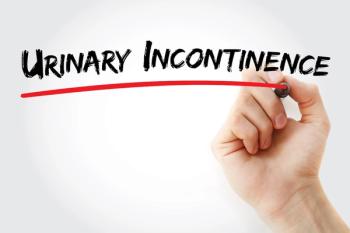
Low RSV Vaccination Rates in Nursing Homes Highlight Urgent Need for Uptake
Key Takeaways
- Nursing home residents face high risks from respiratory viruses, yet vaccination rates for RSV, influenza, and COVID-19 are low for the 2024–2025 season.
- Only 17.9% of residents received the RSV vaccine, 58.4% received the influenza vaccine, and 29.7% received the COVID-19 vaccine, with regional variations.
Significant gaps in vaccination coverage among nursing home residents leaves vulnerable populations at risk for severe complications, report finds.
Nursing home residents face a heightened risk of severe complications from respiratory viruses, including
“Most nursing home residents have not been afforded the protection offered by vaccination against severe COVID-19, influenza, and RSV disease during the 2024–2025 respiratory virus season,” wrote the investigators of the report. “Addressing low coverage of vaccination against COVID-19, influenza, and RSV must be prioritized, and larger facilities and those in counties with high social vulnerability could benefit from effective interventions.”
Current CDC guidelines recommend a single dose of the RSV vaccine for all adults aged 75 years and older, and adults aged 60 to 74 years at increased risk for severe RSV.2
To evaluate vaccination coverage among nursing home residents, data were collected from CMS-certified nursing homes reporting to the CDC’s National Healthcare Safety Network (NHSN) during the week of November 10, 2024.1 Facilities electronically reported the number of residents who occupied a bed for at least 1 day during the collection week and the number vaccinated with the 2024 to 2025 COVID-19 vaccine, influenza vaccine, and RSV vaccine. Influenza and RSV vaccination data were reported voluntarily, while COVID-19 vaccination reporting was mandatory.
Vaccination coverage among nursing home residents was reported by 51.8% of facilities, with only 17.9% of residents receiving the vaccine. Coverage varied widely by region, from 9.3% in HHS Region 6 to 29.2% in HHS Region 8, and was highest in counties with lower social vulnerability (21.3%) and in smaller facilities (24.1%).
Influenza vaccination coverage was voluntarily reported by 59.4% of facilities, with 58.4% of residents vaccinated. Coverage ranged from 50.9% in HHS Region 10 to 64.1% in HHS Region 1 and was higher in the least socially vulnerable counties (60.8%) and smaller facilities (62.9%).
COVID-19 vaccination coverage, which was reported by 92.9% of facilities, remained low, with only 29.7% of residents receiving the 2024 to 2025 COVID-19 vaccine. Coverage was lowest in HHS Region 6 (19.8%) and highest in Region 8 (38.6%), with better rates observed in smaller facilities (34.7%) and less vulnerable counties (33.6%). These findings highlight substantial gaps in vaccine uptake, particularly for RSV and COVID-19.
However, the investigators noted some limitations. First, reporting of influenza and RSV vaccination coverage was voluntary, and facilities that chose to report may have had higher vaccination rates than those that did not, potentially biasing the results. Second, the increase in the number of facilities reporting influenza and RSV vaccination coverage compared with the previous season limited direct comparisons between seasons. Third, RSV vaccination coverage was calculated for residents of all ages, although approximately 91% of nursing home residents are aged 60 years and older, for whom the vaccine is recommended. Finally, vaccination data were aggregated, preventing assessment of individual-level factors influencing vaccine uptake, such as demographic or clinical characteristics.
Despite these limitations, these findings underscore the urgent need to boost vaccination efforts to safeguard one of the most vulnerable populations from preventable respiratory illnesses.
“Although CDC and other federal agencies have programs in place to address both the financial and vaccine hesitancy–related barriers to vaccination in nursing homes, more needs to be done at every level to protect nursing home residents, who constitute one of the population groups at highest risk for severe respiratory disease,” wrote the investigators.
References
1. Reses HE, Segovia G, Dubendris H, et al. Coverage with influenza, respiratory syncytial virus, and COVID-19 vaccines among nursing home residents — National Healthcare Safety Network, United States, November 2024. MMWR Morb Mortal Wkly Rep. 2024;73:1052-1057. doi:
2. RSV vaccine guidance for older adults. CDC. August 30, 2024. Accessed November 22, 2024.
Newsletter
Stay ahead of policy, cost, and value—subscribe to AJMC for expert insights at the intersection of clinical care and health economics.





























































